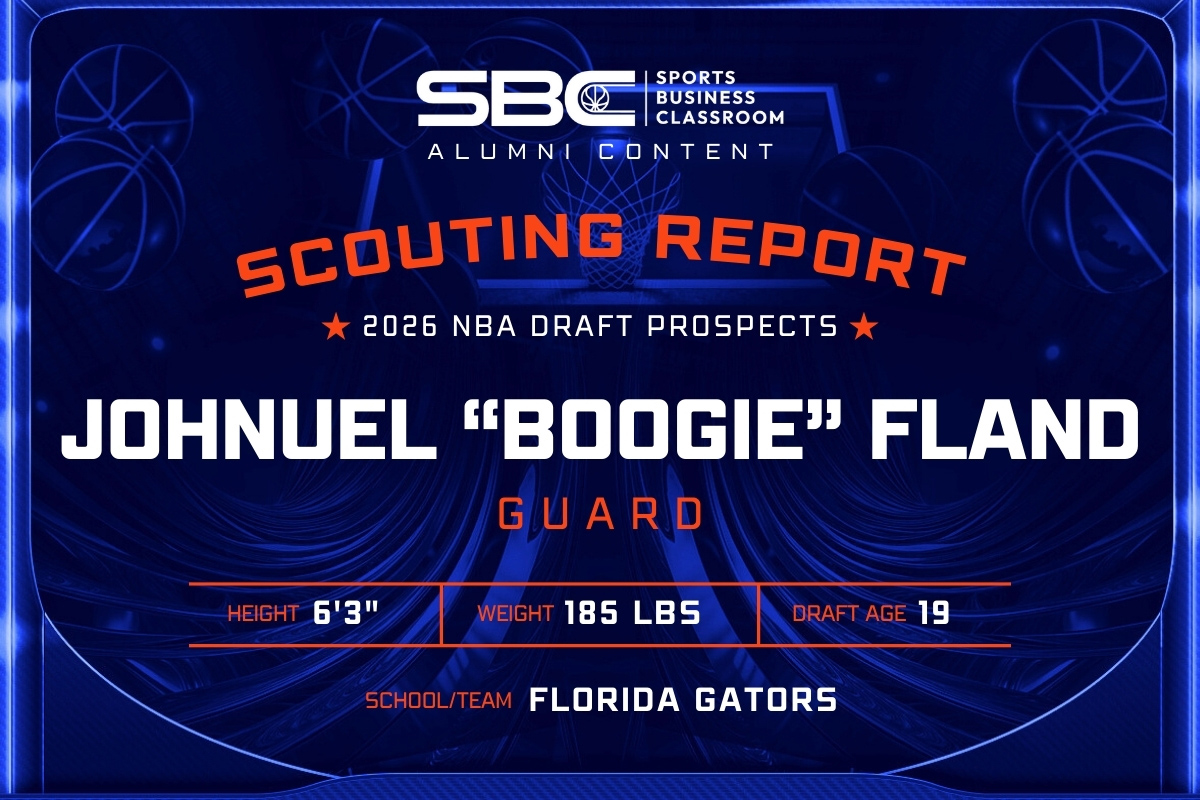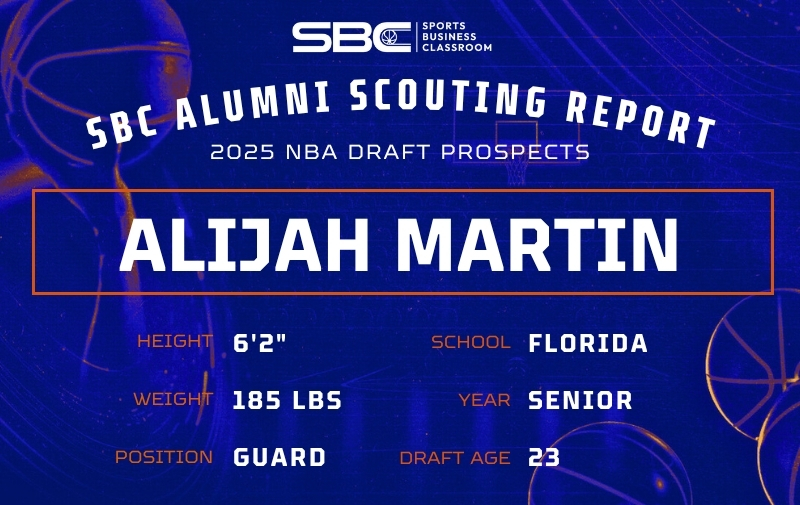
[The following scouting report is part of a series on potential 2023 draft prospects from Sports Business Classroom alumni.]
Kris Murray
Frame: 6’7.5″, 213 lbs
Position: Forward
School: Iowa
2023 Draft Age: 18
Stats via sports-reference.com, Synergy Sports
Offense
Murray, the twin brother of the Rookie of the Year finalist this year (Keegan Murray of the Sacramento Kings), is one of the most intriguing prospects in this year’s draft. Deciding to return for his junior year, Murray showed tremendous improvement in many areas of his game, showcasing an elite ability to space the floor and create his own shots at one of the forward positions. Murray is a sure-fire first-round pick in the upcoming draft.
Murray is already in a promising company. He’s one of three 6’8″- 6’9″ prospects with a usage rate above 20 percent, shooting 11 three-point attempts per 100 possessions while hitting at least 65 percent in the paint over the last 12 years. The others are Doug McDermott, Dylan Windler, and Trey Murphy III. All three were first-round picks in their respective drafts and productive NBA careers.
Known as a consistent deep threat, Murray shot 40 percent from three his sophomore season. This number decreased this year, but his volume and usage increased extensively with his brother leaving for the NBA. The decision to return to school was smart, as he showcased many offensive skills that will translate well to the NBA.
His shot creation (for himself) often came from the foul line area (46 percent of isolations were at the top of the key), where he showed he could score on rip-throughs, keeping the ball high to get to the basket or facing up in the mid-range. Murray can remarkably shoot the ball in traffic with a consistent release. He doesn’t let the distance of the closest defender affect him.
Those shots may not be as available for Murray in the NBA, but his ability to create his own shot in tight spaces will be valuable at the forward position. His shot mechanics suggest he’ll be a productive deep threat with a consistent release and base, regardless of pressure or balance; however, his touch needs to improve. He uses his guide hand (left hand) too much on his deep shot, which seems to get in the way and force him to take half a second longer.
Additionally, Murray should find a consistent runner to keep defenders guessing (both off the dribble and from the perimeter) to create open shots, drives, and passing opportunities.
Outside of his shooting, Murray is a good finisher down low. His 65 percent in the paint accounted for 46 percent of his production this year. Like many successful slashers, Murray can keep his shot aligned with the hoop on most of his drive attempts. However, when guarded by a smaller defender, he does not consistently keeps the ball high to reduce turnovers and often has the ball ripped out or loses control when going up for a layup attempt. Murray could utilize a tighter speed dribble, especially in space, to help his control and help him find more efficient spots on the floor.
Murray can also work on his off-ball movement. Last season at Iowa, there were many possessions where he had open cutting lanes or opportunities to drift for an open shot but tended to rely on watching the ball and the movement of the offense, missing out on advantages. He has similar issues on off-ball screens where Murray failed to create adequate separation. Staying engaged off-ball could help him find more advantages and a faster screen reaction time to create efficient opportunities.
Defense
Murray’s lack of a defined defensive position may hurt him in the draft. However, he may be a positive defender due to the multiple tools and fundamentals. Per barttovik.com, Murray ranked thirty-third in the nation of forwards in defensive Production Over Potential Replacement Per Adjusted Game (POPRAG), which quantifies the change of the player’s average efficiency rating and how it differs against the said defender. It also accounts for game tempo and minute percentage.
Murray showcases consistent and NBA-ready defensive toughness and awareness. He ranked in the 90th percentile in isolation defense, holding his opponents to 26.7 percent from the field. For his size, Murray has elite lateral quickness and can defend without fouling on the perimeter while also being a plus defender in the paint. He understands how to stay down and force his matchup into a tough shot rather than trying to pursue steals and blocks.
He often had trouble against post-ups but much better defending against drives, where he understood how to stay tall and not jump into the driver. When put on an island, Murray needs help sticking with the size of bigger forwards or the elusiveness of smaller guards—which may be due to his foot placement as he likes to have his right foot out to have more leverage but ends up tied up when a post move or dribble inside occurs.
However, Murray should be a productive defender on the next level. His ability to guard multiple positions and use his IQ to adapt against different offensive systems will help him stay on the court, especially during his early years.
Looking Ahead
Murray projects to be a great floor spacer and serviceable defender at the forward position on the next level. Obtaining a green room invite this week, Murray may be off the board by the end of the draft lottery. He will bring toughness, elusiveness, and smarts to any team that drafts him. While he has multiple areas to work on, such as his shot form, off-ball play, and post-up defense, Murray has shown tremendous improvement in his two years in college, which should continue at the next level.







